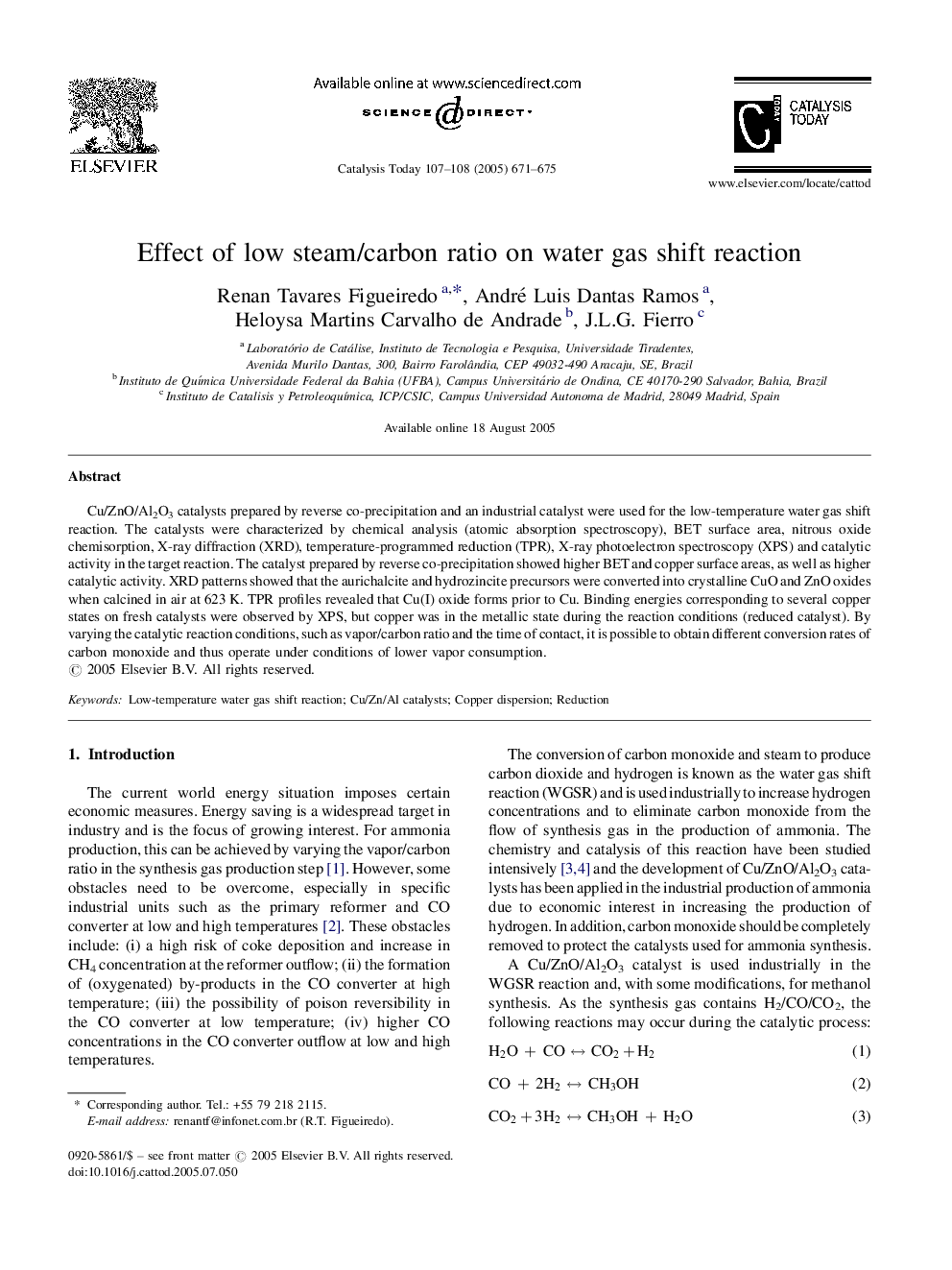| Article ID | Journal | Published Year | Pages | File Type |
|---|---|---|---|---|
| 9610250 | Catalysis Today | 2005 | 5 Pages |
Abstract
Cu/ZnO/Al2O3 catalysts prepared by reverse co-precipitation and an industrial catalyst were used for the low-temperature water gas shift reaction. The catalysts were characterized by chemical analysis (atomic absorption spectroscopy), BET surface area, nitrous oxide chemisorption, X-ray diffraction (XRD), temperature-programmed reduction (TPR), X-ray photoelectron spectroscopy (XPS) and catalytic activity in the target reaction. The catalyst prepared by reverse co-precipitation showed higher BET and copper surface areas, as well as higher catalytic activity. XRD patterns showed that the aurichalcite and hydrozincite precursors were converted into crystalline CuO and ZnO oxides when calcined in air at 623Â K. TPR profiles revealed that Cu(I) oxide forms prior to Cu. Binding energies corresponding to several copper states on fresh catalysts were observed by XPS, but copper was in the metallic state during the reaction conditions (reduced catalyst). By varying the catalytic reaction conditions, such as vapor/carbon ratio and the time of contact, it is possible to obtain different conversion rates of carbon monoxide and thus operate under conditions of lower vapor consumption.
Keywords
Related Topics
Physical Sciences and Engineering
Chemical Engineering
Catalysis
Authors
Renan Tavares Figueiredo, André Luis Dantas Ramos, Heloysa Martins Carvalho de Andrade, J.L.G. Fierro,
